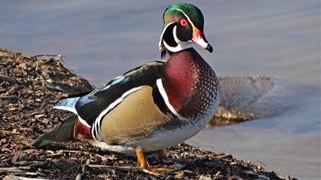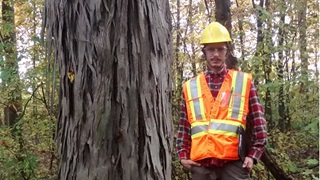Ontario wetlands project: Simple, effective green infrastructure
Lower Thames Valley Conservation Authority initiative will pay enormous ecological dividends
By Randall Van Wagner
Environmental Project Coordinator, Lower Thames Valley Conservation Authority
There is no doubt that urbanization, industry, agriculture and other human activities have an impact on our landscape. The real question is: what can we do about it?

Randall Van Wagner, Environmental Project Coordinator, Lower Thames Valley Conservation Authority
My organization is one of four partners working on a project that takes long-time, often marginal agricultural land, and returns it to wetlands. In the process, we’re having a positive effect on the natural ecosystem along the Point Pelee bird migration corridor.
With an initial $75,000 grant from Enbridge, the Lower Thames Valley Conservation Authority is working to create a new 140-acre wetland ecosystem in partnership with Ducks Unlimited Canada, the Ontario Ministry of Natural Resources and Forests Ontario.
Creating new wetlands on land that once saw industrial and agriculture activities, as well as urban growth, pays an enormous ecological dividend – creating habitat for migratory birds, protecting endangered plant species, improving bird health and increasing Great Lakes water quality.
For a total cost over two years of about $300,000, largely from the private sector, it’s a project well worth undertaking.
But why do we need wetlands construction in the first place? Fact is, Southern Ontario has gone through centuries of development, and this area has lost some 95 percent of its natural cover through the creation of towns, transportation corridors, farms, businesses, factories and the like.
At the same time, our region is home to about 100 times more rare and endangered plants and animals than reside elsewhere in Canada. Further, we’re at the confluence of two major migratory routes for birds; the Mississippi and Atlantic migratory routes flow right through this region.
Ask any avid birdwatcher. After journeys of thousands of kilometres along their migratory paths, birds transiting the Point Pelee area adjacent to Lake Erie often land at the north shore for rest and refuelling. The new wetlands habitat is an enormous benefit not only to those migratory birds but to the rare and endangered plants as well.
And there are other benefits. Consider the issue of phosphorus that’s caused algae blooms recently as fertilizer washes into the watercourses running into Lake Erie. In 2014 Toledo, Ohio experienced an algae bloom that caused its lake-drawn tap water to be unsuitable for human consumption.
Our project is part of the solution to that issue. By creating wetlands, we can help purify water and absorb excess nutrients before they reach the Great Lakes system. It’s a perfect example of simple, effective green infrastructure.
It’s rare for us to identify a piece of available land of this size in an important migratory route. In fact, the 140-acre property is big enough that we’ve decided to take it on over two years. This year we’ll start with a 70-acre habitat restoration, and the remaining 70 acres will continue to be farmed until we come back next year to complete the project. From there, we’ll begin several years of monitoring the wetlands’ success.
The method of turning agricultural land into a wetland is straightforward enough.
Following the initial soil analysis (including surveying and mapping), the wetlands are dug to little more than a four-foot depth and seedlings are planted—in this case, some 40,000, consisting of 25 to 30 species that are native to the area. They’ll include black cherry, shag-bark hickory, coffee tree, tulip tree, black walnut, red oak and burr oak.
Importantly, the wetlands are laid out in as natural a shape as possible. Keeping an irregular shoreline is crucial to the success of the wetlands; wildlife abhors a straight line because it provides very little cover against predators.
Finally, the educational component kicks in, with plans for school groups and scouting troops to visit the site for hands-on learning sessions in everything from habitat conservation to hand-planting.
There’s no doubt the program works for the benefit of Southern Ontario’s wildlife and human inhabitants. My own hope is that more companies—and other private landowners—will join Enbridge in contributing to these kinds of programs and giving back to the land.
Randall Van Wagner is the environmental project coordinator with the Lower Thames Valley Conservation Authority in Chatham, Ontario.










